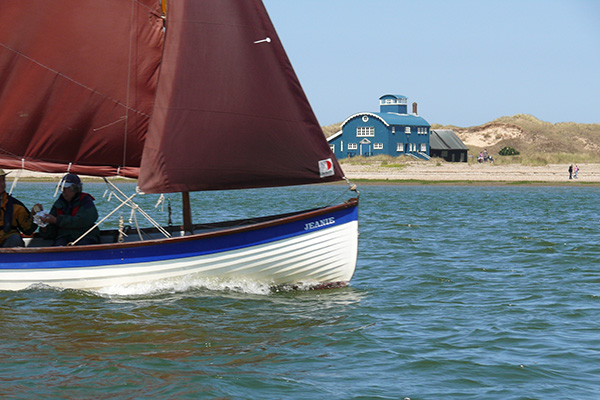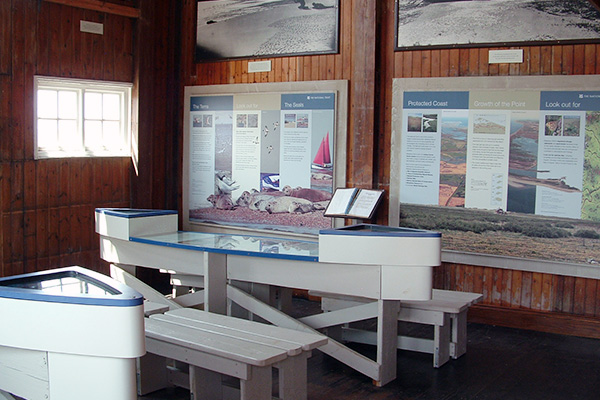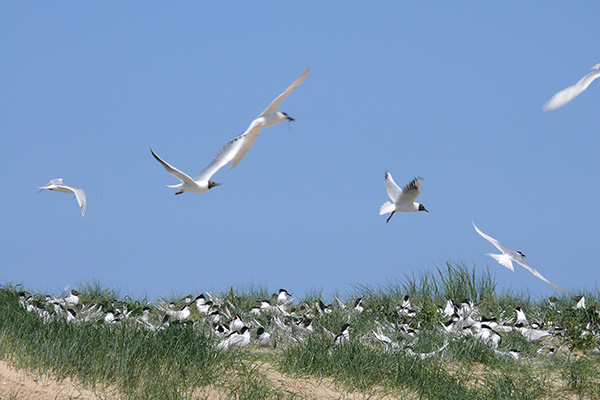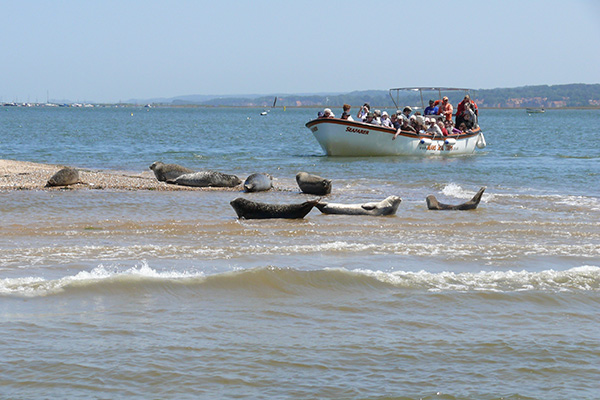
Children on a Marshes Dunes & Seals activity day
Blakeney Point is a long shingle spit providing shelter to a large tidal area. Silt and sand deposit have built up as large areas of salt marsh providing a wide range of coastal and inter-tidal habitat. The whole area is forever changing due to the influences of tides and storms, particularly in winter.
Shingle banks, margins between shingle, sand and mud provide a wide range of plant habitat, where a number of specialist plant species can be found such as Sea Campion, Sea Lavender, Sea Beet as well as some rarer species. The area is hugely important for breeding and over-wintering birds. In summer large Tern colonies (Little, Common, Sandwich and Artic terns) inhabit nesting areas on the point. In winter a small coastal strip of Norfolk is home to huge flocks of Greylag, Brent and Pink Foot geese. Ringed Plover, Shelduck, Oystercatchers, Avocets and Little Egret are among some of the large numbers of bird species which you may see. Blakeney Point also provides a haul out area and breeding ground for Grey and Common seals.
The seal colony at Blakeney Point has between 500 to 800 seals which stay with us all year round. The grey seals have their pups during November and December and the common seals in July and August. The seals move up with the incoming tide on to the end of Blakeney Point where we are able to see them at very close quarters from the boat. There is ample time for photographs and also to get information from the knowledgeable crew.
With it’s array of habitat and species, Blakeney Point is an ideal study area or field trip. Ferry boat is the best way to see the seals and to access the area with minimal disturbance. Beans Boats have been operating in Blakeney Harbour for over 50 years and now have 6 licensed boats which carry varying numbers of passengers ranging from 12 to 50. We are therefore able to accommodate different sizes of groups which we can fit into the most suitable boat. This makes your trip more personal and comfortable as you don’t have to either share with other passengers or pay for unused seats.

Beans Seal Trips run throughout the year (see timetable) and in addition to our daily charter service, we offer discounts for schools and groups - prices depending on the size of the groups, ages and time of year. Please telephone or e-mail for more information and discuss your particular requirements. (see ‘contact us’ on the website)
You may prefer to take just a seal trip (duration apprx. 1 hour) or you may wish to land on Blakeney Point as well for some study work or simply to take a stroll up to the Old Lifeboat House which is now an Information Centre. The length of time ashore is usually an hour although this can often be altered to suit your requirements. You may even like to have a Guided Tour by the National Trust wardens who will be pleased to show you around this most unique, unspoilt area.




We are a family run business and take great care in looking after all our passengers. Our boats are fully licensed and insured and carry full lifesaving equipment. We comply with regulations set by the MCA (Maritime and Coastguard Agency) and safety rules are stringently followed. The crews are trained in first aid and sea survival and fire-fighting so you can relax and enjoy the trip knowing you are in safe hands.
External and study visits to different environments can be an important part of the education process. For team leaders/teachers and those seeking advice on safe practice for school and groups such as RISK ASSESMENT please contact us.
All our boats depart from MORSTON QUAY which is on the A149 coast road, 1 mile west of Blakeney (see “how to find us” section for more detail). Morston Quay has a National Trust Information Centre and look-out tower and there is a large car park (free to NT members) which has ample space for buses. There are toilets on the quay (also on Blakeney Point itself) and a National Trust refreshment kiosk serving hot and cold drinks, snacks and ice creams.
Morston Quay is also a good starting point for exploring and walking. The National Trust website is well worth a visit for a route and local information
We hope this information helps you to organize your school/group trip - if you require any further help, please don’t hesitate to contact us.